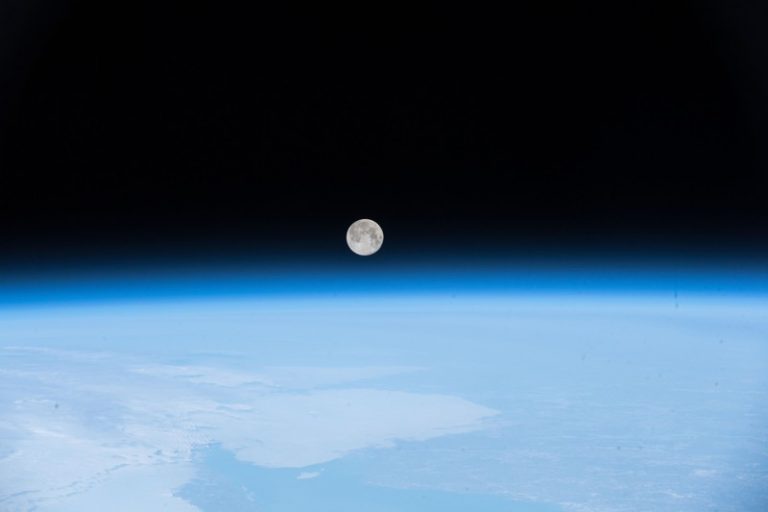
Danuri was flown from South Korea to the United States, and is now in Cape Canaveral, Florida, preparing to be placed on a Falcon 9 rocket that will take it beyond Earth’s orbit on 2 August.
Monitoring Desk
By this time next week, South Korea’s first lunar probe will be on its way to the Moon. The probe, Danuri, which means ‘enjoy the Moon’, should arrive at its destination by mid-December and orbit for a year.
Researchers are eager for Danuri, which took more than six years to build and cost 237 billion won (US$180 million), to begin revealing insights about aspects of the Moon ranging from its ancient magnetism to ‘fairy castles’ of dust sprinkled across its surface. Researchers also hope that the craft, officially called the Korea Pathfinder Lunar Orbiter, will find hidden sources of water and ice in areas including the permanently cold, dark regions near the poles.
Scientists in South Korea say the mission will pave the way for the country’s more ambitious plans to land on the Moon by 2030. Success for Danuri will secure future planetary exploration, says Kyeong-ja Kim, a planetary geoscientist at the Korea Institute of Geoscience and Mineral Resources in Daejeon, and principal investigator for one of Danuri’s instruments, a γ-ray spectrometer. “Everybody is so happy and excited,” says Kim, describing the lines of people who waved goodbye to the orbiter — safely packed in a container — on its way to the airport on 5 July.
Danuri was flown from South Korea to the United States, and is now in Cape Canaveral, Florida, preparing to be placed on a Falcon 9 rocket that will take it beyond Earth’s orbit on 2 August.
“The spacecraft is ready to launch,” says Eunhyeuk Kim, project scientist for the mission at the Korea Aerospace Research Institute (KARI) in Daejeon, but he still sometimes worries about whether the team is truly ready. “Until the time of the launch, we will be checking all the systems over and over and over.”
Within an hour of launching, the 678-kilogram spacecraft will detach from the rocket and KARI will take control of it, extending the craft’s solar panels and deploying its parabolic antenna.
“It’s just so cool to see more and more countries sending up their own orbiters and adding to the global understanding of what’s going on the Moon,” says Rachel Klima, a planetary geologist at the Johns Hopkins University Applied Physics Laboratory in Laurel, Maryland, who is part of the science team.
Fairy castles
Danuri will carry five scientific instruments. Among the most exciting is PolCam, which will be the first camera in lunar orbit to map the texture of the Moon’s surface using polarized light. Polarizers are popular for observations of Earth, such as those studying vegetation, but have not been sent to study the Moon, says Klima. By capturing how light reflects off the lunar surface, PolCam will be able to reveal characteristics such as the size and density of grains of dust and rock. This could help researchers to study unusual objects such as the tiny, porous towers of dust called fairy castle structures, says Klima. These structures can’t be reproduced on Earth because of its stronger gravity compared to the Moon, which makes them difficult to study.
“It’s a ground-breaking instrument,” says William Farrand, a planetary geologist at the Space Science Institute in Boulder, Colorado, who will be working on PolCam data. Farrand hopes to use the data to study deposits of volcanic ash and improve understanding of the history of explosive eruptions on the Moon.
Another widely anticipated instrument is ShadowCam, a highly sensitive camera provided by NASA that will take images of the permanently shadowed regions of the Moon, devoid of sunlight. The camera will need to rely on scattered light such as that from far-off stars to capture images of the surface topography.
Since shortly after the Moon formed, volatile materials such as water from comets have been bouncing off its surface and becoming trapped in these very cold regions, says Klima. “We’ve got billions of years of Solar System history locked in the layers of these cold traps.” By giving researchers a view of the terrain in these regions, and identifying brighter regions that might be ice deposits, ShadowCam will be able to inform future landing missions to study that history, she says.
Magnetism
Researchers hope that data collected by Danuri’s magnetometer (KMAG) will help solve a mystery. The Moon’s surface displays highly magnetic regions; these suggest that for hundreds of millions of years in the Moon’s past, its core generated a magnetic field almost as powerful as Earth’s, through a process known as a dynamo, says Ian Garrick-Bethell, a planetary scientist at the University of California, Santa Cruz, who hopes to interpret KMAG data. But scientists are puzzled by how the Moon’s core, which is much smaller and proportionally farther from the surface than Earth’s, could have powered such an intense dynamo, and for so long. KMAG will take precise measurements of the Moon’s magnetic field to help them understand this.
Garrick-Bethell hopes that towards the end of its life, the spacecraft will fly closer to the Moon to get even better measurements of the magnetic field. “The most exciting science would come if we flew closer to 20 kilometers.”
The KARI team has not yet decided whether it will shrink Danuri’s orbit after the one-year mission is complete and eventually crash-land the craft on the Moon, says Eunhyeuk Kim. Alternatively, he says, the team could send the capsule into a higher orbit that could see it glide on for many more years.
_____________
Courtesy: Nature